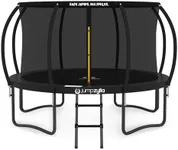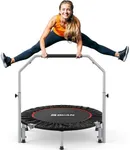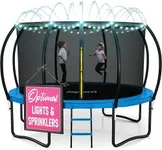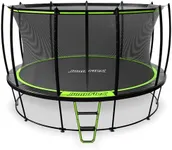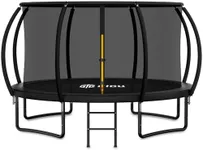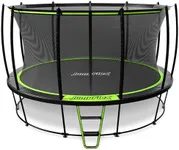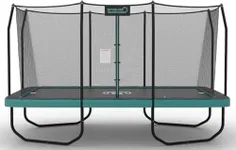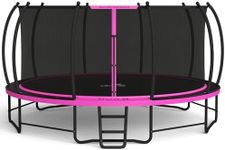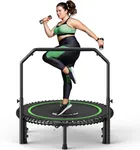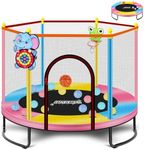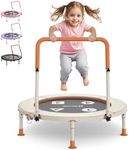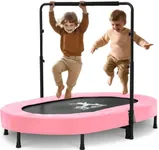Buying Guide for the Best Trampoline
Choosing the right trampoline can be a fun and rewarding experience, but it's important to consider several key factors to ensure you get the best fit for your needs. Trampolines come in various sizes, shapes, and with different features, so understanding what to look for can help you make an informed decision. Whether you're buying for fitness, recreation, or competitive use, knowing the key specifications will help you find a trampoline that is safe, durable, and enjoyable for everyone who uses it.SizeThe size of a trampoline is crucial because it determines how much space you will need and how many people can use it at once. Trampolines range from small, personal fitness trampolines to large, family-sized models. If you have limited space or are buying for a single user, a smaller trampoline (around 6-10 feet in diameter) might be sufficient. For families or multiple users, larger trampolines (12-16 feet or more) provide more jumping area and can accommodate more weight. Consider the available space in your yard and the number of users when choosing the size.
ShapeTrampolines come in various shapes, including round, rectangular, and oval. The shape affects the bounce and the amount of usable jumping area. Round trampolines are the most common and are generally safer for recreational use because they direct the jumper towards the center. Rectangular trampolines offer a more even bounce and are preferred for gymnastics and competitive use. Oval trampolines provide a larger jumping area while still maintaining some of the safety features of round trampolines. Choose the shape based on the intended use and the skill level of the jumpers.
Weight CapacityThe weight capacity of a trampoline indicates how much weight it can safely support. This is important for safety and durability. Trampolines with higher weight capacities are generally more robust and can accommodate multiple users at once. For small children, a lower weight capacity (around 100-150 pounds) may be sufficient. For older children, teenagers, and adults, look for trampolines with a higher weight capacity (200-400 pounds or more). Always check the manufacturer's specifications to ensure the trampoline can handle the expected load.
Safety FeaturesSafety features are essential to prevent injuries while using a trampoline. Look for trampolines with safety nets, padded frames, and secure enclosures. Safety nets prevent users from falling off the trampoline, while padded frames protect against impact with the metal parts. Some trampolines also have no-gap enclosures that prevent limbs from getting caught between the springs. Prioritize trampolines with comprehensive safety features, especially if young children will be using it.
Spring QualityThe quality of the springs affects the bounce and longevity of the trampoline. High-quality springs provide a better bounce and are more durable. Trampolines with more springs generally offer a smoother and more consistent bounce. For recreational use, standard springs may be sufficient, but for competitive use or frequent jumping, look for trampolines with high-tensile springs. Check the material and construction of the springs to ensure they are rust-resistant and durable.
Frame MaterialThe frame material determines the strength and durability of the trampoline. Most trampoline frames are made from galvanized steel, which is rust-resistant and strong. A sturdy frame ensures the trampoline can withstand regular use and various weather conditions. For long-term durability, choose trampolines with heavy-duty frames and high-quality welding. If you live in an area with harsh weather, consider a trampoline with a weather-resistant coating.
Mat QualityThe jumping mat is the surface you bounce on, and its quality affects the overall performance and safety of the trampoline. Look for mats made from UV-resistant polypropylene or similar materials that can withstand prolonged exposure to sunlight without degrading. A high-quality mat will provide a consistent bounce and last longer. Ensure the mat is securely attached to the frame and check for any warranties or guarantees offered by the manufacturer.

